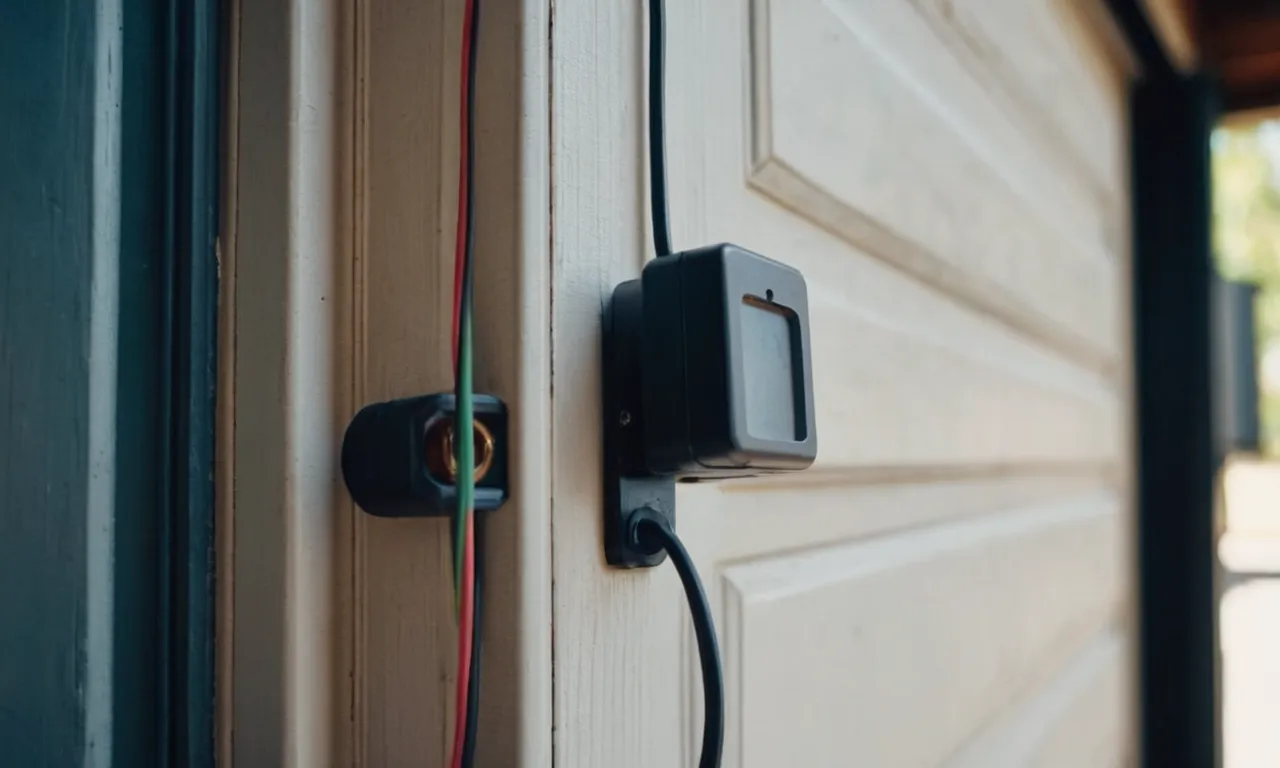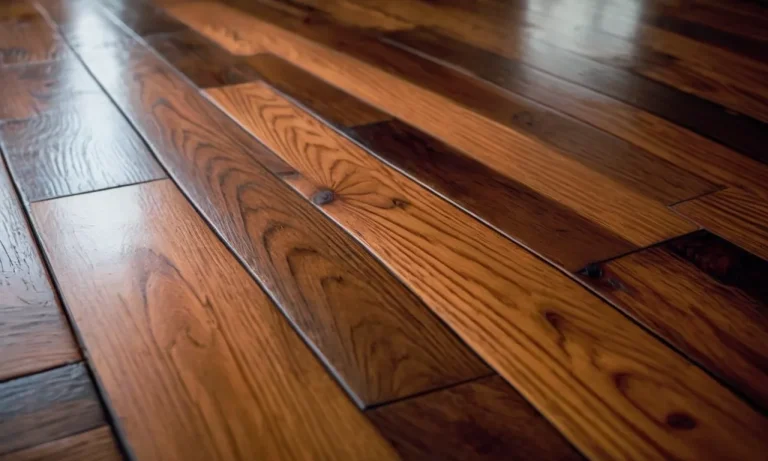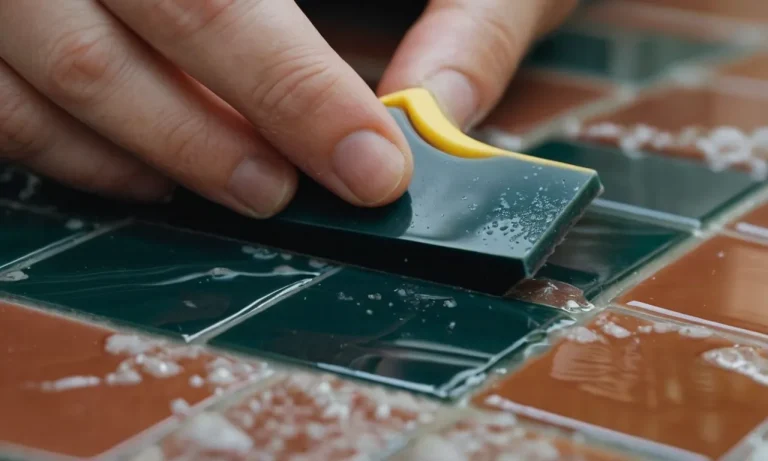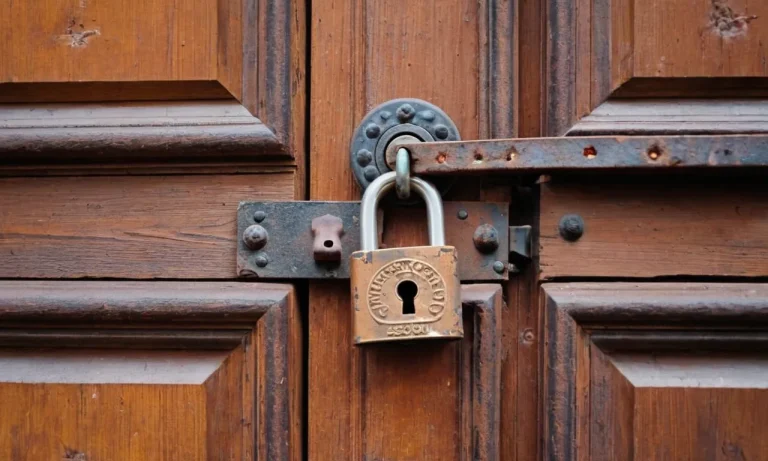Garage Door Sensors: A Comprehensive Guide
Garage door sensors are an important safety feature that detect when something is blocking the path of a closing garage door. However, some homeowners may be tempted to bypass or disable these sensors if they find them to be a nuisance.
If you’re short on time, here’s a quick answer: We do not recommend bypassing or disabling garage door sensors, as this poses a serious safety risk. The sensors are designed to prevent injury or damage.
In this comprehensive guide, we’ll cover everything you need to know about garage door sensors, why they’re so important for safety, and tips for keeping them in good working order.
How Garage Door Sensors Work
Garage door sensors play a crucial role in ensuring the safety and functionality of your garage door. These sensors use advanced technology to detect obstructions and prevent accidents or damage to your vehicle or property.
Understanding how garage door sensors work can help you appreciate their importance and make informed decisions when it comes to maintaining and troubleshooting them.
The Sensor Types
There are two main types of garage door sensors: the photoelectric sensors and the mechanical sensors. Photoelectric sensors, also known as optical sensors, work by emitting an invisible beam of light across the garage door opening.
When an object interrupts the beam, the sensors detect the obstruction and signal the door to stop closing or reverse its direction. Mechanical sensors, on the other hand, use physical contact to detect obstructions.
These sensors are typically located at the base of the garage door and will stop the door from closing if they encounter resistance.
How They Detect Obstructions
Photoelectric sensors utilize an infrared beam of light that is emitted by one sensor and received by the other. When the beam is uninterrupted, it means that the garage door opening is clear. If the beam is broken, indicating an obstruction, the sensors send a signal to the garage door opener to halt the closing or reverse its direction.
Mechanical sensors work by detecting changes in pressure or resistance. When the garage door encounters an object or obstacle, the sensors sense the resistance and trigger the door to stop and reverse.
Common Placement
The placement of garage door sensors is crucial for their effective operation. Photoelectric sensors are typically installed on each side of the garage door, a few inches above the ground. This allows the infrared beam to span across the opening.
Mechanical sensors, on the other hand, are installed at the base of the garage door, near the floor. They are strategically positioned to detect any obstruction that may be encountered while closing the door.
It is important to ensure that the sensors are properly aligned and free from any dirt or debris that could interfere with their functionality.
Understanding how garage door sensors work and their different types can help you troubleshoot any issues that may arise. Regular maintenance and cleaning of the sensors are essential to ensure their proper functioning.
If you experience any problems with your garage door sensors, it is recommended to consult a professional technician who can diagnose and resolve the issue promptly.
Why Sensors Are Critical for Safety
When it comes to garage doors, safety should always be a top priority. Garage door sensors play a crucial role in ensuring the safety of both people and property. These sensors are designed to detect any obstacles or obstructions in the path of the garage door, preventing accidents and potential damage.
Here are two key reasons why sensors are critical for safety:
Preventing injury, especially to children
Garage doors can weigh several hundred pounds and can cause severe injuries if they accidentally close on someone or something. This is especially concerning when it comes to children, who may not always be aware of the potential dangers posed by a moving garage door.
With the installation of sensors, the risk of injury is significantly reduced. Garage door sensors work by detecting any objects or individuals in the door’s path, causing it to automatically stop and reverse its direction.
This prevents accidents and gives parents peace of mind knowing that their children are safe.
Avoiding property damage
Aside from personal safety, garage door sensors also help prevent property damage. Without sensors, the garage door may close on a car, bike, or other valuable items left in its path. This can result in dents, scratches, or even more significant damage.
By installing sensors, the door will automatically stop and reverse if it detects any objects blocking its path. This ensures that your belongings are protected from potential damage caused by the garage door closing unexpectedly.
According to a study conducted by the National Electronic Injury Surveillance System, garage doors account for a significant number of injuries each year. In fact, an estimated 30,000 injuries related to garage doors occur annually in the United States alone.
This highlights the importance of having garage door sensors in place to prevent accidents and protect both individuals and property.
For more information on the importance of garage door sensors and how they work, you can visit websites such as CDC.gov or ConsumerReports.org.
Maintaining Your Sensors
Proper maintenance of your garage door sensors is crucial to ensure their optimal functionality and to keep your garage and belongings safe. Here are some essential maintenance tasks you should regularly perform:
Checking connections
One of the first things you should do when maintaining your garage door sensors is to check the connections. Make sure that all the wiring and cables are securely connected. Loose connections can lead to sensor malfunctions, resulting in the door not functioning properly.
If you notice any loose wires or cables, tighten them or seek professional assistance if needed.
Replacing batteries
Garage door sensors often rely on batteries to power their operation. It is important to replace the batteries regularly to ensure uninterrupted functionality. Check the manufacturer’s instructions to determine the recommended battery replacement schedule for your specific sensors.
Remember, a simple battery change can prevent unexpected sensor failures and save you from potential inconvenience.
Cleaning lenses
Over time, dust, dirt, and debris can accumulate on the lenses of your garage door sensors, obstructing their ability to detect obstacles accurately. Regularly cleaning the lenses will help maintain their effectiveness. Using a soft cloth or a microfiber cloth, gently wipe away any dirt or smudges.
Avoid using harsh chemicals or abrasive materials that could damage the lenses. By keeping the lenses clean, you can ensure that the sensors can detect objects and prevent any accidents or damages.
Testing regularly
To ensure that your garage door sensors are working correctly, it is essential to test them regularly. You can perform a simple test by placing an object, such as a box or a broomstick, in the path of the closing garage door.
If the sensors are functioning properly, the door should reverse its direction and open back up when the object is in its way. If the door does not reverse or if it hesitates, it may indicate a problem with the sensors that requires further investigation or professional assistance.
By following these maintenance tips, you can prolong the lifespan of your garage door sensors and prevent potential issues. Remember, regular maintenance not only ensures the safety of your garage and belongings but also saves you from expensive repairs in the long run.
What to Do If Sensors Malfunction
Troubleshooting tips
If you find that your garage door sensors are not functioning properly, there are a few steps you can take to try and resolve the issue yourself. First, check to make sure that there is nothing blocking the sensors. Sometimes, dust, debris, or even spider webs can interfere with their operation.
Clean the sensors with a soft cloth and ensure that they are aligned properly.
If the sensors are clean and aligned, but still not working, you may need to check the wiring. Look for any loose connections or frayed wires. If you are comfortable with electrical work, you can try to fix the wiring yourself.
However, it is always recommended to consult a professional technician to avoid any potential safety hazards.
Another troubleshooting tip is to check the power source. Make sure that the sensors are receiving power and that the circuit breaker has not tripped. If the power source seems to be the issue, you may need to call an electrician to resolve the problem.
When to call a technician
If you have tried the troubleshooting tips mentioned above and your garage door sensors are still not functioning properly, it is time to call a professional technician. Garage door sensors are complex devices that require specialized knowledge to repair.
Attempting to fix them without the necessary expertise can lead to further damage or even personal injury.
A trained technician will have the tools and experience to diagnose the exact issue with your sensors and provide an effective solution. They will be able to identify any underlying electrical problems, replace faulty components, or reprogram the sensors if necessary.
Remember, garage door sensors play a crucial role in ensuring the safety of your family and property. It is always best to leave the repairs to the experts to guarantee that your garage door operates smoothly and securely.
Alternatives to Bypassing Sensors
Adjusting sensitivity
Instead of bypassing garage door sensors, a more effective alternative is to adjust their sensitivity. Garage door sensors are designed to detect any obstructions in the path of the door, ensuring the safety of people and objects.
However, sometimes they can be overly sensitive and trigger false alarms. In such cases, adjusting the sensitivity of the sensors can help prevent unnecessary interruptions in the door’s operation.
Most modern garage door openers come with a sensitivity adjustment feature that allows you to tweak the sensors’ responsiveness. By fine-tuning this setting, you can find the right balance between safety and convenience.
It’s important to note that adjusting sensitivity should be done cautiously, as setting it too low can compromise the safety features of the garage door.
Adding additional safety features
Another alternative to bypassing garage door sensors is to enhance the safety features of your garage door system. This can be done by adding supplementary safety devices that work in tandem with the sensors to provide an extra layer of protection.
One popular safety feature is the laser parking assistant, which helps drivers park their vehicles safely inside the garage. It utilizes laser beams to guide the driver into the correct parking position, ensuring that there is ample space between the vehicle and the garage door.
This can help prevent accidental collisions with the door and eliminate the need to bypass the sensors.
Additionally, installing safety edge sensors can further enhance the safety of your garage door. These sensors are placed along the bottom edge of the door and detect any resistance when the door is closing.
If an obstruction is detected, the sensors will immediately reverse the door’s direction, preventing any potential accidents or damage.
It’s worth noting that while these alternatives can provide added convenience and safety, they should not be seen as a replacement for properly functioning garage door sensors. Regular maintenance and testing of the sensors should still be conducted to ensure their effectiveness and reliability.
Conclusion
In conclusion, garage door sensors play a vital role in protecting your home and family. While you may be tempted on occasion to disable them if they seem overly sensitive, this poses serious risks that far outweigh any convenience benefits.
With regular maintenance and troubleshooting, you can keep your sensors in reliable working order. If issues persist, call a professional technician rather than attempting to bypass the sensors. Prioritizing garage door safety will give you peace of mind knowing your family and property are protected.







